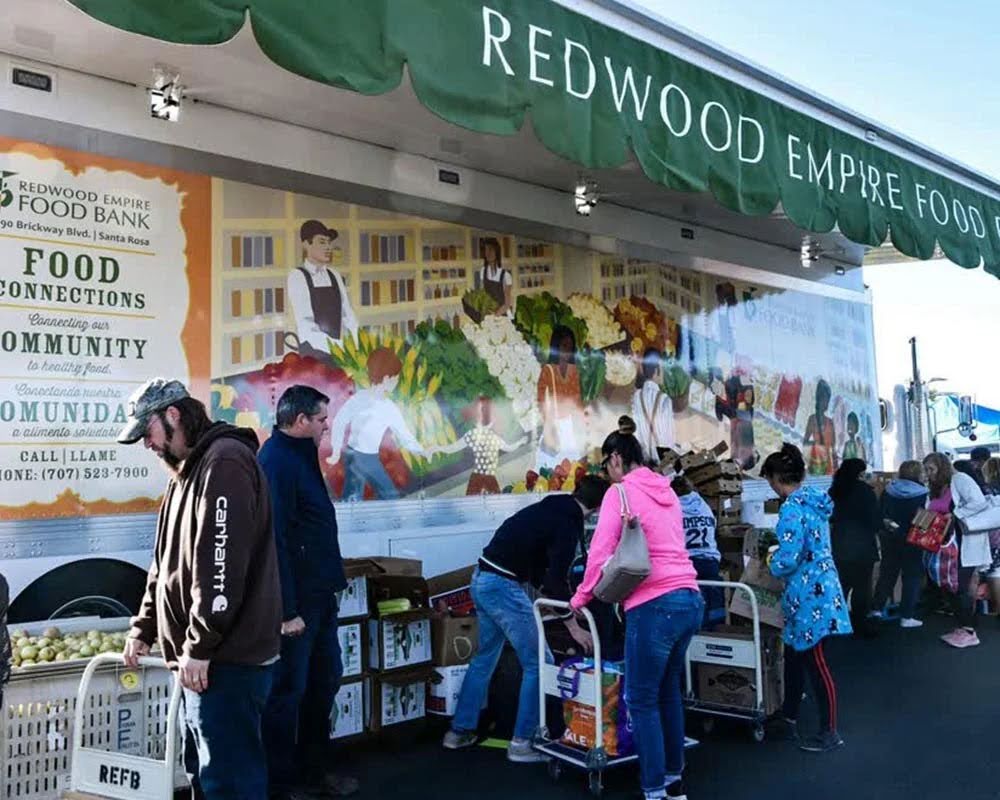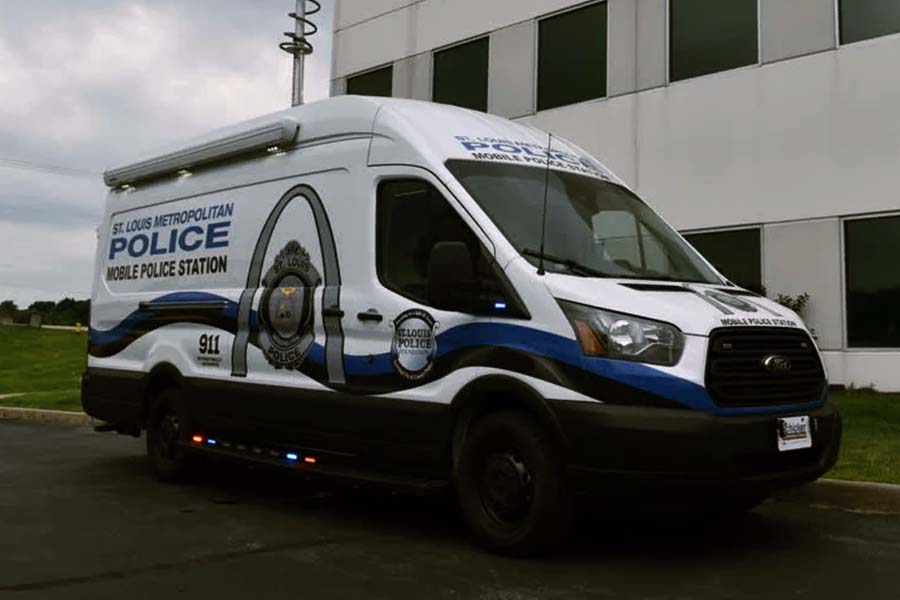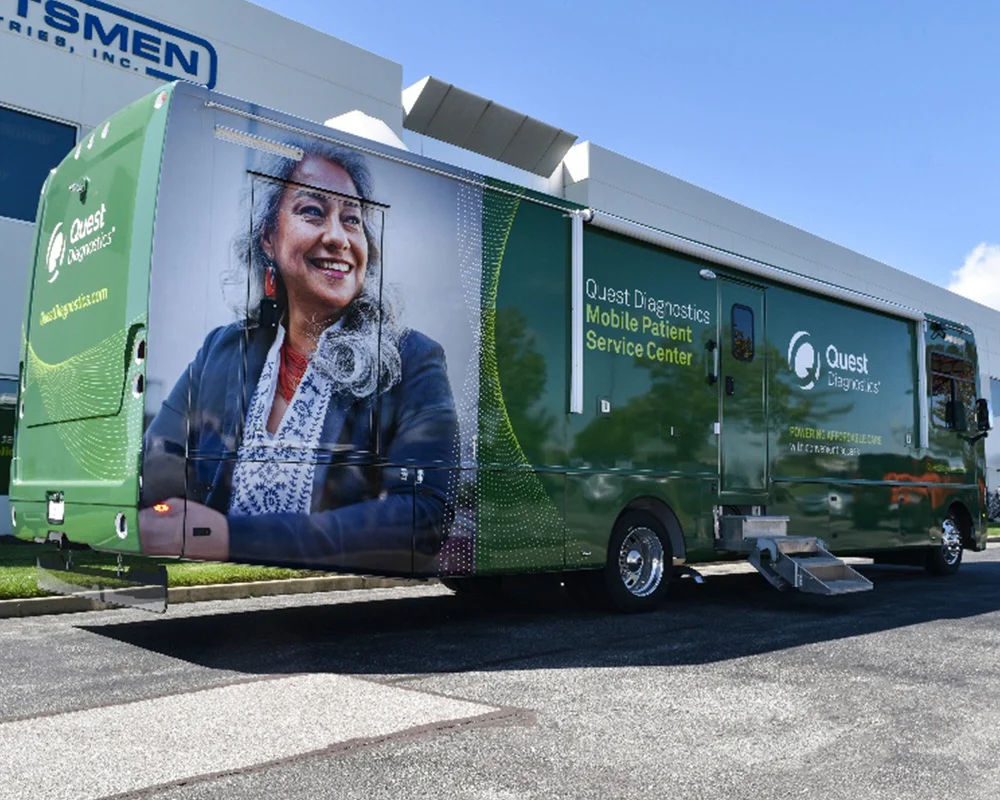How Mobile Pop-Ups Are Redefining Retail and Shopping Experiences
Retailers struggle to attract foot traffic and create meaningful in-store engagement. Traditional retail formats are expensive, rigid, and slow to...
8 min read
Craftsmen Industries May 5, 2025 8:12:02 AM

Pop-up experiences have emerged as a powerful strategy in modern retail marketing, allowing brands to connect with their audiences in unique and engaging ways. These temporary installations create a sense of urgency and exclusivity that drives foot traffic and boosts brand awareness. With changing consumer behaviors and the evolving retail landscape, pop-up experiences offer brands an opportunity to make lasting impressions, foster customer loyalty, and test new markets. This blog explores the role of pop-up experiences in retail marketing, how to create successful pop-up campaigns, and future trends shaping the industry.
Pop-up experiences are temporary retail installations that brands set up for a limited time to interact with consumers. Unlike traditional retail spaces that operate year-round, pop-ups are short-term and designed to create a sense of exclusivity and urgency. These events can range from product launches and seasonal promotions to immersive brand activations that captivate audiences and drive sales.
Just as pop-up experiences bring brands directly to consumers, mobile medical units for sale offer healthcare providers the flexibility to serve patients wherever they’re needed most.
The concept of pop-up retail emerged in the early 2000s as a response to the growing influence of e-commerce. As online shopping boomed, brands sought new ways to connect with consumers offline. Pop-ups started as temporary storefronts but evolved into dynamic marketing tools that combine experiential elements, such as interactive displays, personalized services, and digital technology. Over time, brands have increasingly used pop-ups to create unique and memorable experiences that resonate with their target audiences.
While traditional retail stores focus on long-term operations, pop-up experiences are designed to be temporary and flexible. This difference allows brands to experiment with new concepts, test different markets, and create buzz around limited-time offers. Unlike brick-and-mortar stores, which require significant investments in location, inventory, and staff, pop-ups offer a lower-risk way to engage customers and generate excitement around a brand.
Pop-up experiences provide an excellent opportunity for brands to increase their visibility in high-traffic areas, making them accessible to new audiences. By strategically selecting locations and designing captivating installations, brands can draw attention and create buzz around their products. These events can generate excitement and help establish a presence in new markets.
One of the key advantages of pop-up experiences is the sense of urgency they create. Since pop-ups are temporary, customers feel a need to visit before the event or store disappears. This exclusivity encourages immediate action, often leading to higher sales and a more engaged consumer base. The limited-time nature of pop-ups can make consumers feel like they are part of something special, amplifying the desire to engage.
Pop-up experiences provide brands with a valuable opportunity to test new products, concepts, and markets. By hosting pop-ups in different locations, brands can gauge consumer reactions and adjust their strategies based on real-time feedback. This testing phase helps minimize the risks associated with new product launches and allows brands to tailor their offerings to the preferences of local markets.
Pop-ups enable brands to create deeper connections with consumers through personalized and interactive experiences. These events provide opportunities for face-to-face interaction, allowing brands to build trust and loyalty. Consumers are more likely to remember a brand that offers them a memorable, in-person experience, which can drive repeat business and long-term advocacy.
Location is critical for the success of a pop-up experience. Brands should consider factors such as foot traffic, demographics, and proximity to complementary businesses. By selecting locations that align with the preferences of their target audience, brands can ensure higher attendance and greater engagement with their pop-up.
An important aspect of any successful pop-up experience is the design and theme. Pop-ups should reflect the brand’s identity while creating a visually stunning and immersive environment. Creative layouts, engaging displays, and attention to detail can enhance the overall experience and leave a lasting impression on consumers.
Technology plays an essential role in today’s pop-up experiences. Incorporating digital elements such as augmented reality, interactive displays, and social media integration can make the experience more engaging and memorable. These features not only enhance consumer engagement but also help brands stand out in a competitive marketplace.
Successful pop-up campaigns should integrate with the brand’s overall marketing strategy, including its online presence. Promoting the pop-up through social media, email newsletters, and digital ads helps raise awareness and drive traffic to the event. Additionally, brands can use their online platforms to continue engaging with attendees after the event ends, extending the life of the pop-up experience.
To evaluate the effectiveness of a pop-up experience, brands should track key performance indicators such as foot traffic, sales, and social media engagement. These metrics provide valuable insights into the success of the event and its impact on brand awareness and sales. By analyzing these metrics, brands can determine whether the pop-up met its objectives and make data-driven decisions for future events.
Feedback from attendees is essential for understanding the impact of a pop-up experience. Brands should collect customer feedback through surveys, interviews, and social media monitoring. This feedback can reveal consumer preferences, highlight areas for improvement, and help brands refine future pop-up campaigns.
The ultimate goal of a pop-up experience is to foster long-term relationships with consumers. By offering a memorable experience, brands can encourage repeat business, word-of-mouth recommendations, and brand loyalty. Satisfied customers are more likely to become brand advocates, helping to extend the reach of the pop-up beyond its physical location.
Organizing a pop-up event involves numerous logistical considerations, including securing permits, managing inventory, and coordinating transportation. To ensure smooth operations, brands should carefully plan every aspect of the event, from setup to teardown, and be prepared to handle any unexpected issues that arise. Similarly, industries like healthcare rely on mobile medical vehicles to overcome logistical challenges, delivering essential services directly to communities with flexibility and efficiency.
Pop-up experiences require careful budgeting to ensure that costs stay within the planned budget. Expenses such as venue rental, staffing, marketing, and materials can add up quickly. Effective resource allocation ensures that the event delivers a positive return on investment and maximizes the impact of the pop-up.
Brands must comply with local laws and regulations when organizing a pop-up experience. This includes obtaining necessary permits, adhering to health and safety guidelines, and ensuring that the event complies with zoning laws. Failing to do so could result in legal issues or fines, which could harm the brand’s reputation and success.
As technology continues to evolve, pop-up experiences are likely to incorporate augmented reality (AR) and virtual reality (VR). These technologies allow brands to create more immersive and interactive experiences, enhancing customer engagement and providing innovative ways to showcase products.
Consumers are increasingly concerned about sustainability, and brands are responding by adopting eco-friendly practices in their pop-up experiences. By using sustainable materials, minimizing waste, and promoting environmental consciousness, brands can enhance their reputation and appeal to eco-conscious consumers.
With the rise of big data, pop-up experiences will become more personalized. Brands can use data analytics to tailor the experience to individual preferences, creating unique and customized interactions for each attendee. This personalization will help brands foster stronger connections with consumers and drive loyalty.
As brands expand internationally, they will need to adapt their pop-up experiences to suit the cultural preferences of local markets. This could include adjusting the design, product offerings, or marketing strategies to resonate with different consumer segments.
In the fashion industry, pop-up experiences have been used to launch limited edition collections or exclusive collaborations. These pop-ups generate excitement and drive sales by offering products that are only available for a short time.
Tech companies often use pop-up experiences to showcase new products and provide hands-on demonstrations. These pop-ups allow consumers to experience the latest technology firsthand, creating a sense of anticipation and excitement.
In the food and beverage industry, pop-ups are often used to offer product tastings or introduce new menu items. These events allow consumers to try products before making a purchase, which can drive sales and increase brand loyalty.
Pop-ups in the art and culture sector often feature interactive installations and exhibitions that invite consumers to engage with the brand in creative ways. These experiences can foster a deeper emotional connection with the brand and create a memorable experience for attendees.
Before launching a pop-up, it is crucial to define clear objectives. Whether it’s to increase brand awareness, drive sales, or test new products, setting goals will guide the overall strategy and ensure the event is successful.
To create an engaging pop-up experience, brands should collaborate with designers and marketers who specialize in experiential events. These professionals can help create a visually stunning space and develop a compelling marketing strategy that will drive attendance and engagement.
Once the pop-up is designed and ready, promotion is key to generating awareness. Utilize various marketing channels, including social media, email newsletters, influencer partnerships, and local press to promote the event. Social media platforms, especially Instagram and TikTok, are invaluable tools for showcasing the visual appeal of pop-up experiences and encouraging visitors to share their experiences, which can exponentially increase brand reach.
To ensure that visitors have a memorable experience, brands should focus on providing interactive elements that allow attendees to engage with the brand in unique ways. This could include live demonstrations, hands-on activities, or personalized offerings. Brands should also consider offering exclusive deals or giveaways to further enhance the consumer experience and incentivize attendance.
Pop-up experiences are temporary, immersive brand activations or retail spaces that brands set up for a short period of time. They provide unique, engaging experiences for consumers, often tied to product launches, events, or special offers. These experiences allow brands to connect with their audience in physical spaces outside traditional stores.
Selecting the right location depends on several factors, including your target audience, brand identity, and event goals. Ideal locations are high-traffic areas where your target demographic is likely to visit. Consider factors like foot traffic, local events, proximity to key competitors, and accessibility. Collaboration with retail brokers or experiential marketing agencies can also help in choosing the best location.
The duration of a pop-up experience varies depending on your goals and the nature of the event. Pop-ups can last anywhere from a few days to several weeks. For product launches, a short, high-impact pop-up might be ideal, whereas for longer-term engagements like holiday activations, you may opt for extended stays. The key is to create a sense of urgency and exclusivity to drive attendance.
Success comes down to clear objectives, location, and engaging customer experiences. A well-thought-out marketing plan, personalized interactions with your brand, and a unique or innovative product offering all play a role. Ensuring that the pop-up generates excitement—through social media campaigns, influencer partnerships, or experiential activities—is also crucial.
The cost of setting up a pop-up can vary widely depending on the location, size of the space, duration, and the level of customization involved. Costs typically include venue rental, permits, design and construction of the space, staffing, and marketing. A small, simple pop-up may cost a few thousand dollars, while a large, high-profile event could run into the tens of thousands.
Yes, pop-up experiences can significantly expand a brand’s reach. They provide an opportunity to introduce your products to new audiences, engage with customers face-to-face, and build excitement around your brand. By creating memorable, shareable moments, pop-ups can lead to increased foot traffic, social media buzz, and long-term brand loyalty.
Pop-up experiences are reshaping the way brands connect with consumers, offering an unmatched opportunity to engage, test new markets, and amplify brand visibility. As customers increasingly seek personalized and immersive interactions, pop-ups have become a vital piece of modern marketing strategies. Whether launching a new product, entering a new region, or creating an unforgettable brand moment, pop-ups help brands achieve meaningful impact.
With thoughtful planning, creative design, and strategic execution, pop-ups enable brands to leave a lasting impression and foster deeper connections with their audience. Their flexibility and short-term nature make them a powerful tool for generating buzz, enhancing marketing efforts, and driving sales. As the retail and experiential landscapes continue to evolve, the value of pop-up experiences will only grow — making them essential for brands that want to stay competitive and relevant.
Ready to bring your brand to life through a custom pop-up experience?
Partner with Craftsmen Industries to design, build, and deliver unforgettable brand moments.

Retailers struggle to attract foot traffic and create meaningful in-store engagement. Traditional retail formats are expensive, rigid, and slow to...

In the modern landscape of law enforcement, the need for mobility and adaptability is paramount to addressing the diverse challenges policies are...

Mobile medical coaches are crucial for providing necessary and often life-saving healthcare. These spacious vehicles carry essential and...